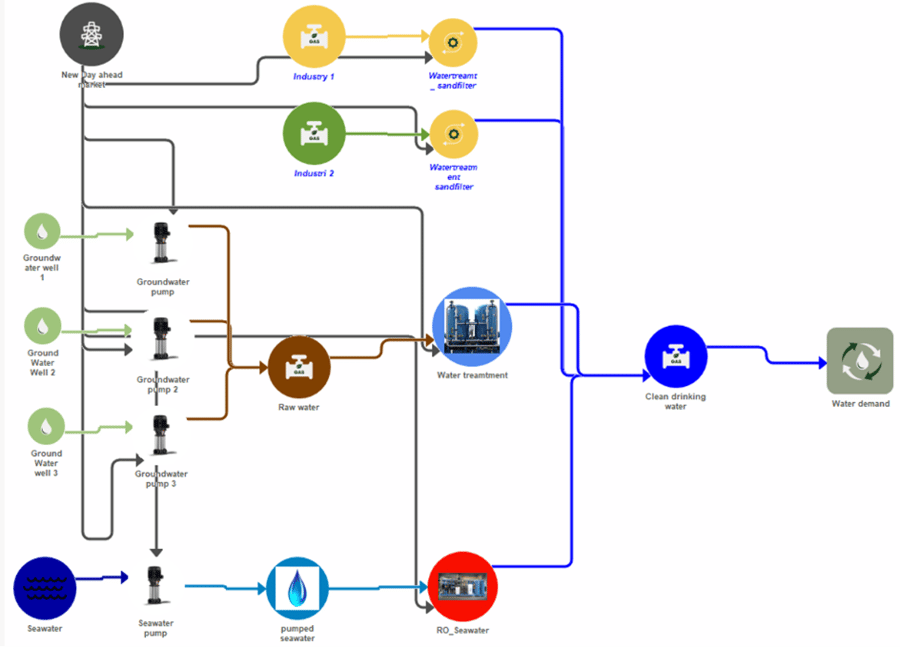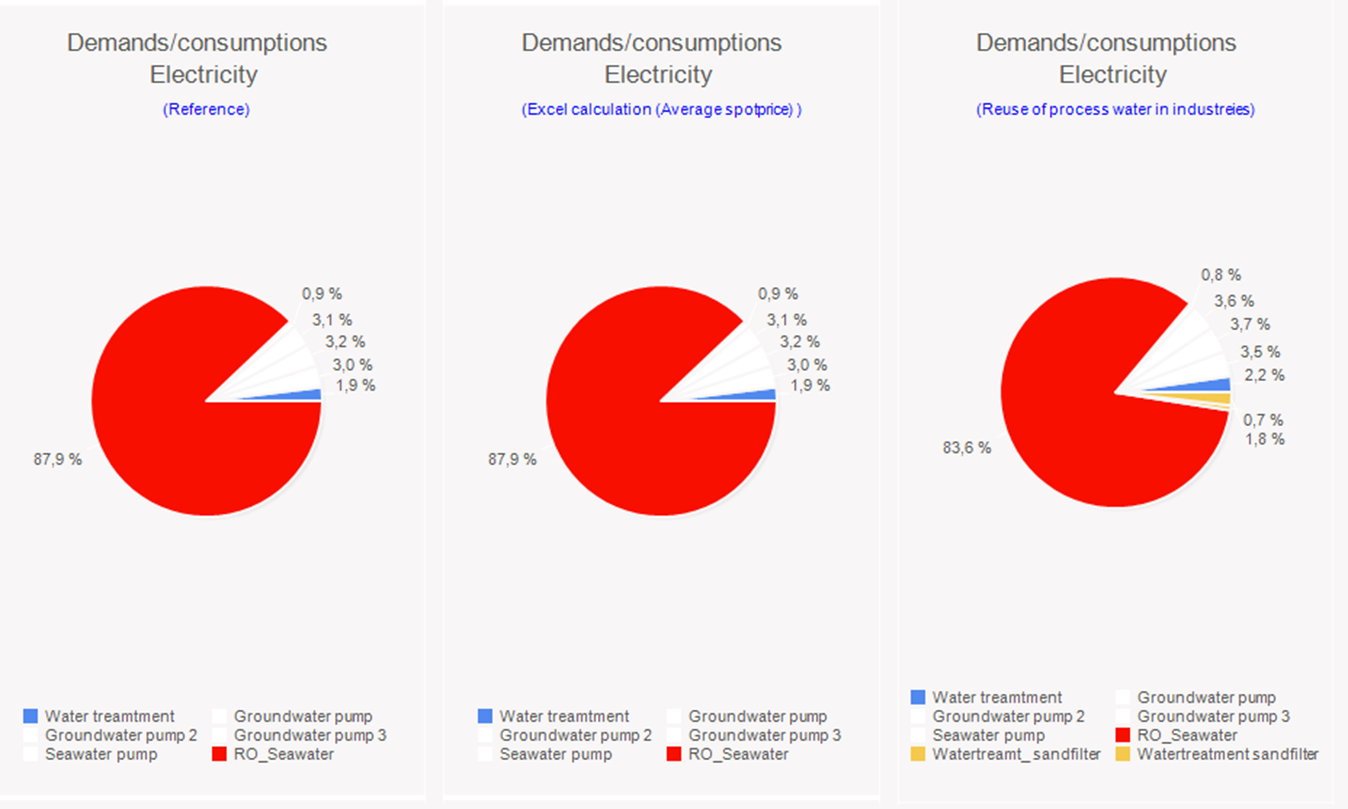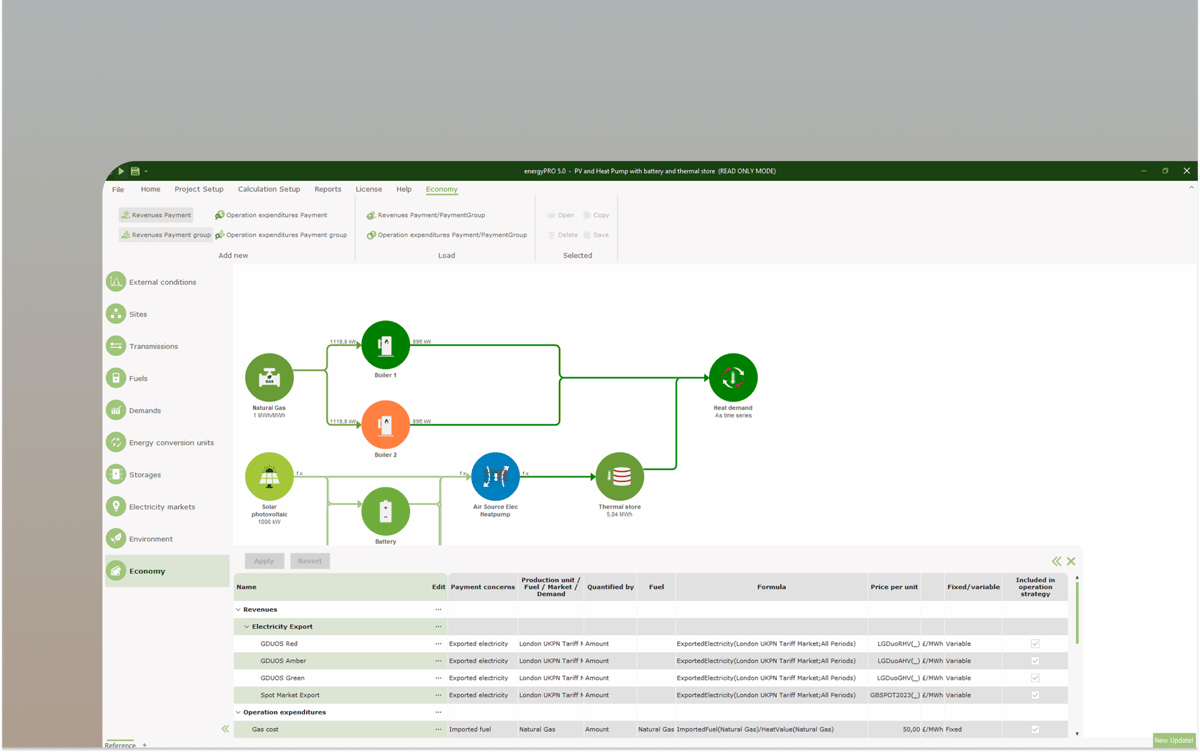Get started with energyPRO today and take your energy projects from concept to completion.

energyPRO for Drinking Water Production
Optimise desalination and groundwater synergy
What if your drinking water plant could become an energy market participant?
What if it could react to electricity prices, balance peak demand, and utilise multiple water sources — all within a single model? With energyPRO, this becomes a reality.
This use case demonstrates how energyPRO can optimise a combined desalination and groundwater-based water production facility, operating under fluctuating spot prices and real-world demand curves.
Design an adaptive and cost-effective drinking water plant
.jpeg?width=1438&height=1080&name=pictures%20(13).jpeg)
Drinking water production facts
Many traditional planning tools rely on fixed-price averages.
The water sector consumes nearly 4% of global electricity (IEA, 2022)
RO desalination energy consumption: ~2–10 kWh/m³
Electricity makes up to 60% of OPEX in desalination
Smart operation can reduce water costs by up to 20% in high-volatility grids
Sector coupling (e.g., reuse of process water) can dramatically reduce energy demand
Overview of the System Modeled
This use case examines a hybrid drinking water facility supplying 12.5 million m³/year, drawing from both groundwater and seawater. It compares three modeled scenarios in energyPRO:
1. Base Scenario – Spot Market Optimisation
- Uses hourly 2024 spot prices (DK1)
- RO operation shifts to low-price hours
- Realistic household consumption pattern with peak demand mornings/evenings
2. Alternative Scenario – Fixed Price Reference
- Uses 2024 average electricity price
- Reflects traditional Excel-style economics with no time-based dispatch
3. Process Water Return Scenario
- Includes reuse of 1 million m³ industrial process water
- Reduces dependency on RO while maintaining quality through sand filtration
Simplifications
- No backflushing, chemical pretreatment, or pressure recovery is modeled.
- Focus is solely on electricity consumption, water source balance, and cost impact.
What’s modeled in energyPRO: Key system components
Scenario inputs and assumptions
Demand Profile Redistribution
- Reflects hourly variation based on Danish consumption behavior
Groundwater Treatment (Sand Filter)
- Includes three separate groundwater sources, each with different distances and depths, resulting in varying operational costs. energyPRO dynamically selects the optimal source based on cost and demand conditions, enabling realistic dispatch planning.
Reverse Osmosis Desalination Unit
- Electricity-dependent, cost-optimised dispatch
- Dynamic operation in Base scenario
Process Water Return
- Minimal treatment required
- Offset for RO production in third scenario

How energyPRO improves your project
Comparison of the three models

The modules you need
Key modules for Drinking Water Production in energyPRO
Learn. Apply. Succeed: Your energyPRO Training Hub
This use case is illustrative, not prescriptive. Proper dimensioning requires hydraulic and biological expertise. Still, it shows how engineers can use energyPRO to simulate dynamic, modular water-energy systems — a vital step toward smart, cost-effective infrastructure.
Dive into our comprehensive courses, webinars, and tutorials to master energyPRO’s powerful features.




